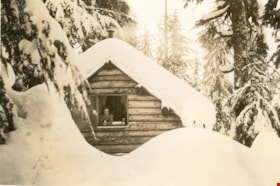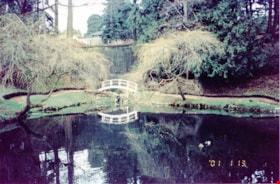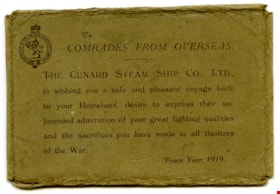Narrow Results By
Creator
- Adams, Albert Egerton 1
- Adams, John Macgregor 1
- Alter, Ian 1
- Anderson, H. Graeme (Henry Graeme), 1882-1925 1
- Ashmore, Sidney G. (Sidney Gillespie), 1852-1911 1
- Ballentine, Teresa 1
- Bateman, Caroline Mary Wettenhall 1
- Bond, Courtney C. J. 1
- British Columbia Electric Company 2
- Browne, Gordon, 1858-1932 1
- Burnaby Community Heritage Commission 1
- Burnaby, Robert, 1828-1878 1
Person / Organization
- Adams, John 1
- Air Raid Precautions (A.R.P.) 29
- Banks, Charles Arthur 1
- Barnes, Hannah Victoria "Girlie" Love 1
- Bateman, Marianne May 30
- Bateman, Warren Stafford 1
- Battersby, Frank 2
- Beatty, Ella 1
- Bower, Janet Shankie 15
- Boy Scouts of Canada 1
- Brandrith, Benjamin Jefferson "Ben" 1
- Brandrith, Martha Dorothy “Dot” Love 1
military memorial stained glass window
https://search.heritageburnaby.ca/link/museumartifact36930
- Repository
- Burnaby Village Museum
- Accession Code
- BV995.21.5
- Description
- stained glass memorial window; red, blue, orange, purple and gold stained glass; lead cames and solder joints; depicts a crown with a cross at the top and an eagle in middle; "ARDVA <> AD ASTRA: [see shape drawn in register] PER - TO THE GLORY OF GOD AND IN MEMORY OF ROB ROY AND GORDON F. MACGREGOR. ERECTED BY FATHER, MOTHER AND IAN".
- Object History
- Flying Officer Roy MacGregor and Pilot Officer Gordon MacGregor were the only members of the congregation of the Vancouver Heights Presbyterian Church to be killed in service during World War II. In memory of the brothers, the church and family sponsored two stained glass windows that were installed in the church in 1947. The windows feature the symbol of the Royal Air Force (also used by other Commonwealth air forces) and the motto per ardua ad astra which means "through adversity to the stars."
- Category
- 08. Communication Artifacts
- Classification
- Art
- Object Term
- Glass, Stained
- Subjects
- Communication Artifacts
Images
Mount Seymour cabin "Argu-In" in the snow
https://search.heritageburnaby.ca/link/museumdescription2916
- Repository
- Burnaby Village Museum
- Date
- [between 1939 and 1949] (date of orignals), copied 2008
- Collection/Fonds
- Pixie McGeachie fonds
- Description Level
- Item
- Physical Description
- 1 photograph (tiff) : b&w ; 600 dpi
- Scope and Content
- Photograph of log cabin named "Argu-In" covered in snow on Mount Seymour, North Vancouver. Pixie McGeachie is waving out the window of the cabin. Jack McGeachie and friends, Maurice Skinner and Jack Gannon built and maintained a cabin with friends on Mount Seymour, North Vancouver from 1938 unt…
- Repository
- Burnaby Village Museum
- Collection/Fonds
- Pixie McGeachie fonds
- Description Level
- Item
- Physical Description
- 1 photograph (tiff) : b&w ; 600 dpi
- Scope and Content
- Photograph of log cabin named "Argu-In" covered in snow on Mount Seymour, North Vancouver. Pixie McGeachie is waving out the window of the cabin. Jack McGeachie and friends, Maurice Skinner and Jack Gannon built and maintained a cabin with friends on Mount Seymour, North Vancouver from 1938 until after the Second World War.
- Subjects
- Natural Phenomena - Snow
- Geographic Features - Forests
- Geographic Features - Mountains - British Columbia
- Buildings - Residential - Cabins
- Accession Code
- BV008.17.5
- Access Restriction
- No restrictions
- Reproduction Restriction
- May be restricted by third party rights
- Date
- [between 1939 and 1949] (date of orignals), copied 2008
- Media Type
- Photograph
- Notes
- Title based on contents of photograph
Images
Mount Seymour cabin "Argu-In" in the snow
https://search.heritageburnaby.ca/link/museumdescription2917
- Repository
- Burnaby Village Museum
- Date
- [between 1939 and 1949] (date of orignals), copied 2008
- Collection/Fonds
- Pixie McGeachie fonds
- Description Level
- Item
- Physical Description
- 1 photograph (tiff) : b&w ; 600 dpi
- Scope and Content
- Photograph of log cabin named "Argu-In" covered in snow with a large snow drift in front on Mount Seymour. Pixie McGeachie is leaning out the window of the cabin. Jack McGeachie and friends, Maurice Skinner and Jack Gannon built and maintained a cabin with friends on Mount Seymour, North Vancouver …
- Repository
- Burnaby Village Museum
- Collection/Fonds
- Pixie McGeachie fonds
- Description Level
- Item
- Physical Description
- 1 photograph (tiff) : b&w ; 600 dpi
- Scope and Content
- Photograph of log cabin named "Argu-In" covered in snow with a large snow drift in front on Mount Seymour. Pixie McGeachie is leaning out the window of the cabin. Jack McGeachie and friends, Maurice Skinner and Jack Gannon built and maintained a cabin with friends on Mount Seymour, North Vancouver from 1938 until after the Second World War.
- Subjects
- Natural Phenomena - Snow
- Geographic Features - Forests
- Geographic Features - Mountains - British Columbia
- Buildings - Residential - Cabins
- Accession Code
- BV008.17.6
- Access Restriction
- No restrictions
- Reproduction Restriction
- May be restricted by third party rights
- Date
- [between 1939 and 1949] (date of orignals), copied 2008
- Media Type
- Photograph
- Notes
- Title based on contents of photograph
Images
The naval air war in Korea
https://search.heritageburnaby.ca/link/museumlibrary3371
- Repository
- Burnaby Village Museum
- Author
- Hallion, Richard, 1948-
- Publication Date
- 1988
- c1986
- Call Number
- 951.9 HAL
- Repository
- Burnaby Village Museum
- Collection
- Special Collection
- Material Type
- Book
- Accession Code
- BV991.45.226
- ISBN
- 9780821722671
- Call Number
- 951.9 HAL
- Author
- Hallion, Richard, 1948-
- Place of Publication
- New York
- Publisher
- Kensington Pub. Corp.
- Publication Date
- 1988
- c1986
- Series
- Zebra book.
- Physical Description
- 383 p. : ill. ; 18 cm.
- Library Subject (LOC)
- Korean War, 1950-1953--Aerial operations, American
- United States. Navy--Aviation
- Names
- Oakalla Prison Farm
- Object History
- Salvaged from Oakalla Prison site in October 1991
New Haven
https://search.heritageburnaby.ca/link/museumdescription13525
- Repository
- Burnaby Village Museum
- Date
- Jan. 2001
- Collection/Fonds
- Burnaby Village Museum Photograph collection
- Description Level
- Item
- Physical Description
- 1 photograph : col. ; 5.3 x 10 cm
- Scope and Content
- Photograph of signage outside of New Haven Correctional Centre. Signage reads, "4250 / NEW HAVEN / NEW HAVEN / CORRECTIONAL CENTRE / VISITORS PLEASE REPORT / TO GENERAL OFFICE / IN MAIN BUILDING".
- Repository
- Burnaby Village Museum
- Collection/Fonds
- Burnaby Village Museum Photograph collection
- Description Level
- Item
- Physical Description
- 1 photograph : col. ; 5.3 x 10 cm
- Scope and Content
- Photograph of signage outside of New Haven Correctional Centre. Signage reads, "4250 / NEW HAVEN / NEW HAVEN / CORRECTIONAL CENTRE / VISITORS PLEASE REPORT / TO GENERAL OFFICE / IN MAIN BUILDING".
- History
- In 1937 New Haven Correctional Centre was established as the British Columbia Training School on the southeast side of Marine Drive in Burnaby (4250 Marine Drive). Sections of Sussex and Patterson Avenues bordered the estate. Originally, the facility housed nineteen inmates with two staff and was one of the first initiatives in Canada to segregate young adult inmates into a separate institution apart from adults. This was part of the Borstal system that started in England whereby young male offenders between the ages of sixteen and twenty one were trained to earn an honest living. Alterations and additions to the estate took place between December 1937 and October 1939 so that more inmates could be accomodated. Five new cottages were built that could hold up to forty people. Except for the plastering and lighting, all work on the new cottages was done by the inmates. On October 29, 1939, the Lieutenant-Governor Eric Hamber formally opened the New Haven Borstal School. World War II interrupted full development of the intstitution and it was closed in 1941 when the inmates were were conscripted into the army. Between 1941 and 1947 the Deaf and Blind Institute were housed at New Haven. In 1947, the New Haven Borstal School returned to the estate. New additions were added to old buildings and new additional buildings were erected on the site over the years including a warden's house on the east grounds and a barn and gymnasium. In the 1970s an equipment shed was added along with another dormitory and a variety of small sheds and storage buildings. The correctional centre officially closed in March 2001.
- Subjects
- Public Services - Correctional
- Geographic Access
- Marine Drive
- Street Address
- 4250 Marine Drive
- Accession Code
- BV020.5.869
- Access Restriction
- No restrictions
- Reproduction Restriction
- No known restrictions
- Date
- Jan. 2001
- Media Type
- Photograph
- Historic Neighbourhood
- Fraser Arm (Historic Neighbourhood)
- Planning Study Area
- Suncrest Area
- Scan Resolution
- 600
- Scan Date
- 25-Aug-2020
- Scale
- 100
- Notes
- Title based on contents of photograph
- Photograph processing stamp on front of photograph reads: "'01_1_13"
- Historical information based on notes from Mary Forsyth's research notes "New Haven" MSS185-018
Images
New Haven building and parking lot
https://search.heritageburnaby.ca/link/museumdescription13528
- Repository
- Burnaby Village Museum
- Date
- Jan. 2001
- Collection/Fonds
- Burnaby Village Museum Photograph collection
- Description Level
- Item
- Physical Description
- 1 photograph : col. ; 5.3 x 10 cm
- Scope and Content
- Photograph of the main building and parking lot of New Haven Correctional Centre located on Marine Drive in Burnaby.
- Repository
- Burnaby Village Museum
- Collection/Fonds
- Burnaby Village Museum Photograph collection
- Description Level
- Item
- Physical Description
- 1 photograph : col. ; 5.3 x 10 cm
- Scope and Content
- Photograph of the main building and parking lot of New Haven Correctional Centre located on Marine Drive in Burnaby.
- History
- In 1937 New Haven Correctional Centre was established as the British Columbia Training School on the southeast side of Marine Drive in Burnaby (4250 Marine Drive). Sections of Sussex and Patterson Avenues bordered the estate. Originally, the facility housed nineteen inmates with two staff and was one of the first initiatives in Canada to segregate young adult inmates into a separate institution apart from adults. This was part of the Borstal system that started in England whereby young male offenders between the ages of sixteen and twenty one were trained to earn an honest living. Alterations and additions to the estate took place between December 1937 and October 1939 so that more inmates could be accomodated. Five new cottages were built that could hold up to forty people. Except for the plastering and lighting, all work on the new cottages was done by the inmates. On October 29, 1939, the Lieutenant-Governor Eric Hamber formally opened the New Haven Borstal School. World War II interrupted full development of the intstitution and it was closed in 1941 when the inmates were were conscripted into the army. Between 1941 and 1947 the Deaf and Blind Institute were housed at New Haven. In 1947, the New Haven Borstal School returned to the estate. New additions were added to old buildings and new additional buildings were erected on the site over the years including a warden's house on the east grounds and a barn and gymnasium. In the 1970s an equipment shed was added along with another dormitory and a variety of small sheds and storage buildings. The correctional centre officially closed in March 2001.
- Subjects
- Public Services - Correctional
- Geographic Access
- Marine Drive
- Street Address
- 4250 Marine Drive
- Accession Code
- BV020.5.872
- Access Restriction
- No restrictions
- Reproduction Restriction
- No known restrictions
- Date
- Jan. 2001
- Media Type
- Photograph
- Historic Neighbourhood
- Fraser Arm (Historic Neighbourhood)
- Planning Study Area
- Suncrest Area
- Scan Resolution
- 600
- Scan Date
- 25-Aug-2020
- Scale
- 100
- Notes
- Title based on contents of photograph
- Photograph processing stamp on front of photograph reads: "'01_1_13"
- Historical information based on notes from Mary Forsyth's research notes "New Haven" MSS185-018
Images
New Haven building and parking lot
https://search.heritageburnaby.ca/link/museumdescription13529
- Repository
- Burnaby Village Museum
- Date
- Jan. 2001
- Collection/Fonds
- Burnaby Village Museum Photograph collection
- Description Level
- Item
- Physical Description
- 1 photograph : col. ; 5.3 x 10 cm
- Scope and Content
- Photograph of the main building and parking lot of New Haven Correctional Centre located on Marine Drive in Burnaby.
- Repository
- Burnaby Village Museum
- Collection/Fonds
- Burnaby Village Museum Photograph collection
- Description Level
- Item
- Physical Description
- 1 photograph : col. ; 5.3 x 10 cm
- Scope and Content
- Photograph of the main building and parking lot of New Haven Correctional Centre located on Marine Drive in Burnaby.
- History
- In 1937 New Haven Correctional Centre was established as the British Columbia Training School on the southeast side of Marine Drive in Burnaby (4250 Marine Drive). Sections of Sussex and Patterson Avenues bordered the estate. Originally, the facility housed nineteen inmates with two staff and was one of the first initiatives in Canada to segregate young adult inmates into a separate institution apart from adults. This was part of the Borstal system that started in England whereby young male offenders between the ages of sixteen and twenty one were trained to earn an honest living. Alterations and additions to the estate took place between December 1937 and October 1939 so that more inmates could be accomodated. Five new cottages were built that could hold up to forty people. Except for the plastering and lighting, all work on the new cottages was done by the inmates. On October 29, 1939, the Lieutenant-Governor Eric Hamber formally opened the New Haven Borstal School. World War II interrupted full development of the intstitution and it was closed in 1941 when the inmates were were conscripted into the army. Between 1941 and 1947 the Deaf and Blind Institute were housed at New Haven. In 1947, the New Haven Borstal School returned to the estate. New additions were added to old buildings and new additional buildings were erected on the site over the years including a warden's house on the east grounds and a barn and gymnasium. In the 1970s an equipment shed was added along with another dormitory and a variety of small sheds and storage buildings. The correctional centre officially closed in March 2001.
- Subjects
- Public Services - Correctional
- Geographic Access
- Marine Drive
- Street Address
- 4250 Marine Drive
- Accession Code
- BV020.5.873
- Access Restriction
- No restrictions
- Reproduction Restriction
- No known restrictions
- Date
- Jan. 2001
- Media Type
- Photograph
- Historic Neighbourhood
- Fraser Arm (Historic Neighbourhood)
- Planning Study Area
- Suncrest Area
- Scan Resolution
- 600
- Scan Date
- 25-Aug-2020
- Scale
- 100
- Notes
- Title based on contents of photograph
- Photograph processing stamp on front of photograph reads: "'01_1_13"
- Historical information based on notes from Mary Forsyth's research notes "New Haven" MSS185-018
Images
New Haven building and parking lot
https://search.heritageburnaby.ca/link/museumdescription13530
- Repository
- Burnaby Village Museum
- Date
- Jan. 2001
- Collection/Fonds
- Burnaby Village Museum Photograph collection
- Description Level
- Item
- Physical Description
- 1 photograph : col. ; 5.3 x 10 cm
- Scope and Content
- Photograph of the main building and cars in parking lot of New Haven Correctional Centre located on Marine Drive in Burnaby.
- Repository
- Burnaby Village Museum
- Collection/Fonds
- Burnaby Village Museum Photograph collection
- Description Level
- Item
- Physical Description
- 1 photograph : col. ; 5.3 x 10 cm
- Scope and Content
- Photograph of the main building and cars in parking lot of New Haven Correctional Centre located on Marine Drive in Burnaby.
- History
- In 1937 New Haven Correctional Centre was established as the British Columbia Training School on the southeast side of Marine Drive in Burnaby (4250 Marine Drive). Sections of Sussex and Patterson Avenues bordered the estate. Originally, the facility housed nineteen inmates with two staff and was one of the first initiatives in Canada to segregate young adult inmates into a separate institution apart from adults. This was part of the Borstal system that started in England whereby young male offenders between the ages of sixteen and twenty one were trained to earn an honest living. Alterations and additions to the estate took place between December 1937 and October 1939 so that more inmates could be accomodated. Five new cottages were built that could hold up to forty people. Except for the plastering and lighting, all work on the new cottages was done by the inmates. On October 29, 1939, the Lieutenant-Governor Eric Hamber formally opened the New Haven Borstal School. World War II interrupted full development of the intstitution and it was closed in 1941 when the inmates were were conscripted into the army. Between 1941 and 1947 the Deaf and Blind Institute were housed at New Haven. In 1947, the New Haven Borstal School returned to the estate. New additions were added to old buildings and new additional buildings were erected on the site over the years including a warden's house on the east grounds and a barn and gymnasium. In the 1970s an equipment shed was added along with another dormitory and a variety of small sheds and storage buildings. The correctional centre officially closed in March 2001.
- Subjects
- Public Services - Correctional
- Geographic Access
- Marine Drive
- Street Address
- 4250 Marine Drive
- Accession Code
- BV020.5.874
- Access Restriction
- No restrictions
- Reproduction Restriction
- No known restrictions
- Date
- Jan. 2001
- Media Type
- Photograph
- Historic Neighbourhood
- Fraser Arm (Historic Neighbourhood)
- Planning Study Area
- Suncrest Area
- Scan Resolution
- 600
- Scan Date
- 25-Aug-2020
- Scale
- 100
- Notes
- Title based on contents of photograph
- Photograph processing stamp on front of photograph reads: "'01_1_13"
- Historical information based on notes from Mary Forsyth's research notes "New Haven" MSS185-018
Images
New Haven buildings
https://search.heritageburnaby.ca/link/museumdescription13527
- Repository
- Burnaby Village Museum
- Date
- Jan. 2001
- Collection/Fonds
- Burnaby Village Museum Photograph collection
- Description Level
- Item
- Physical Description
- 1 photograph : col. ; 5.3 x 10 cm
- Scope and Content
- Photograph of the main building and workshop building inside of New Haven Correctional Centre located on Marine Drive in Burnaby.
- Repository
- Burnaby Village Museum
- Collection/Fonds
- Burnaby Village Museum Photograph collection
- Description Level
- Item
- Physical Description
- 1 photograph : col. ; 5.3 x 10 cm
- Scope and Content
- Photograph of the main building and workshop building inside of New Haven Correctional Centre located on Marine Drive in Burnaby.
- History
- In 1937 New Haven Correctional Centre was established as the British Columbia Training School on the southeast side of Marine Drive in Burnaby (4250 Marine Drive). Sections of Sussex and Patterson Avenues bordered the estate. Originally, the facility housed nineteen inmates with two staff and was one of the first initiatives in Canada to segregate young adult inmates into a separate institution apart from adults. This was part of the Borstal system that started in England whereby young male offenders between the ages of sixteen and twenty one were trained to earn an honest living. Alterations and additions to the estate took place between December 1937 and October 1939 so that more inmates could be accomodated. Five new cottages were built that could hold up to forty people. Except for the plastering and lighting, all work on the new cottages was done by the inmates. On October 29, 1939, the Lieutenant-Governor Eric Hamber formally opened the New Haven Borstal School. World War II interrupted full development of the intstitution and it was closed in 1941 when the inmates were were conscripted into the army. Between 1941 and 1947 the Deaf and Blind Institute were housed at New Haven. In 1947, the New Haven Borstal School returned to the estate. New additions were added to old buildings and new additional buildings were erected on the site over the years including a warden's house on the east grounds and a barn and gymnasium. In the 1970s an equipment shed was added along with another dormitory and a variety of small sheds and storage buildings. The correctional centre officially closed in March 2001.
- Subjects
- Public Services - Correctional
- Geographic Access
- Marine Drive
- Street Address
- 4250 Marine Drive
- Accession Code
- BV020.5.871
- Access Restriction
- No restrictions
- Reproduction Restriction
- No known restrictions
- Date
- Jan. 2001
- Media Type
- Photograph
- Historic Neighbourhood
- Fraser Arm (Historic Neighbourhood)
- Planning Study Area
- Suncrest Area
- Scan Resolution
- 600
- Scan Date
- 25-Aug-2020
- Scale
- 100
- Notes
- Title based on contents of photograph
- Photograph processing stamp on front of photograph reads: "'01_1_13"
- Historical information based on notes from Mary Forsyth's research notes "New Haven" MSS185-018
Images
Nichols Chemical Company fonds
https://search.heritageburnaby.ca/link/museumdescription18755
- Repository
- Burnaby Village Museum
- Date
- 1906-1962
- Collection/Fonds
- Nichols Chemical Company fonds
- Description Level
- Fonds
- Physical Description
- 9 technical drawings
- Scope and Content
- Fonds consists of technical drawings of the Nichols Chemcial Company plant and machinery.
- Repository
- Burnaby Village Museum
- Collection/Fonds
- Nichols Chemical Company fonds
- Description Level
- Fonds
- Physical Description
- 9 technical drawings
- Scope and Content
- Fonds consists of technical drawings of the Nichols Chemcial Company plant and machinery.
- History
- In 1905 the Nichols Chemical Company, acid manufacturers based in Montreal, established their chemical plant on on a tract of land along Burrard Inlet, just east of the North Pacific Lumber Company. This company was later amalgamated and acquired by General Chemical and remains in operation on the original waterfront site. Many of workers at the Nichols Chemical Plant lived in bunkhouses in the community of Barnet including Japanese Canadian families who were employed there. Many of these families were laid off and forcibily removed during the internment of the Japanese in British Columbia during World War II.
- Creator
- Nichols Chemical Company Limited
- Accession Code
- BV998.23
- Date
- 1906-1962
- Media Type
- Technical Drawing
- Notes
- Title based on contents of fonds
Old Curly with a logging crew
https://search.heritageburnaby.ca/link/museumdescription66
- Repository
- Burnaby Village Museum
- Date
- [between 1912 and 1914] (date of original), copied June 1987
- Collection/Fonds
- Burnaby Village Museum Photograph collection
- Description Level
- Item
- Physical Description
- 1 photograph : b&w ; 8.5 x 11 cm print
- Scope and Content
- Photograph of the locomotive known as "Old Curly" at Vancouver Island with a logging crew standing on around the engine. Old Curly was barged over to Vancouver Island just before World War I for use by the British Columbia Mills Timber and Trading Company.
- Repository
- Burnaby Village Museum
- Collection/Fonds
- Burnaby Village Museum Photograph collection
- Description Level
- Item
- Physical Description
- 1 photograph : b&w ; 8.5 x 11 cm print
- Scope and Content
- Photograph of the locomotive known as "Old Curly" at Vancouver Island with a logging crew standing on around the engine. Old Curly was barged over to Vancouver Island just before World War I for use by the British Columbia Mills Timber and Trading Company.
- Subjects
- Occupations - Lumberjacks
- Woodworking Tools and Equipment - Logging Machinery
- Industries - Logging/lumber
- Transportation - Locomotives
- Accession Code
- BV989.8.1
- Access Restriction
- No restrictions
- Date
- [between 1912 and 1914] (date of original), copied June 1987
- Media Type
- Photograph
- Scan Resolution
- 600
- Scan Date
- 01-Jun-09
- Scale
- 100
- Notes
- Title based on contents of photograph
- Note written on verso of photograph reads: "76837 - 29A JUNE 87"
Images
Old Curly with a logging crew
https://search.heritageburnaby.ca/link/museumdescription67
- Repository
- Burnaby Village Museum
- Date
- [between 1912 and 1914] (date of original), copied June 1987
- Collection/Fonds
- Burnaby Village Museum Photograph collection
- Description Level
- Item
- Physical Description
- 1 photograph : b&w ; 8 x 11.5 cm print
- Scope and Content
- Photograph of the locomotive known as "Old Curly" at Vancouver Island with a logging crew standing and leaning against the engine. Old Curly was barged over to Vancouver Island just before World War I for use by the British Columbia Mills Timber and Trading Company.
- Repository
- Burnaby Village Museum
- Collection/Fonds
- Burnaby Village Museum Photograph collection
- Description Level
- Item
- Physical Description
- 1 photograph : b&w ; 8 x 11.5 cm print
- Scope and Content
- Photograph of the locomotive known as "Old Curly" at Vancouver Island with a logging crew standing and leaning against the engine. Old Curly was barged over to Vancouver Island just before World War I for use by the British Columbia Mills Timber and Trading Company.
- Subjects
- Occupations - Lumberjacks
- Woodworking Tools and Equipment - Logging Machinery
- Industries - Logging/lumber
- Transportation - Locomotives
- Accession Code
- BV989.8.2
- Access Restriction
- No restrictions
- Date
- [between 1912 and 1914] (date of original), copied June 1987
- Media Type
- Photograph
- Scan Resolution
- 600
- Scan Date
- 01-Jun-09
- Scale
- 100
- Notes
- Title based on contents of photograph
- Note written on verso of photograph reads: "76837 - 30A JUNE 87"
Images
Opening of Hastings Street Tramline Extension
https://search.heritageburnaby.ca/link/museumdescription3182
- Repository
- Burnaby Village Museum
- Date
- 23 Dec. 1913
- Collection/Fonds
- Burnaby Village Museum Photograph collection
- Description Level
- Item
- Physical Description
- 1 photograph : b&w
- Scope and Content
- Photograph of the opening of the Hastings Street Tramline Extension, Capitol Hill. The man in the centre of the photograph (with the light-coloured coat) and in front of the mounted police officer, has been identified as Joe Toffaletto (he headed up the BCER construction team which built this line …
- Repository
- Burnaby Village Museum
- Collection/Fonds
- Burnaby Village Museum Photograph collection
- Description Level
- Item
- Physical Description
- 1 photograph : b&w
- Material Details
- printed on the photograph, recto, u.l. "Reeve MacGregor + Councillors of Burnaby/ with Officials of the B.C.E.R. at the/ Opening of Burnaby's New Tram Extension/ on Hastings St. East. Dec 23. 1913./ Photograph by J. Phillips/ Capitol Hill P.O."
- Scope and Content
- Photograph of the opening of the Hastings Street Tramline Extension, Capitol Hill. The man in the centre of the photograph (with the light-coloured coat) and in front of the mounted police officer, has been identified as Joe Toffaletto (he headed up the BCER construction team which built this line and who was also known as the anchor for the BCER tug-of-war team). Reeve McGregor is standing near the door to the tram, holding a pipe in one hand and a cane in the other (he is also the only man wearing a bow-tie) and Eber Stride is standing directly in front of the tram, wearing a three-piece suit with a white shirt and bowler hat. British Columbia Electric Railroad official R.H. Sperling and BCER general executive agent Fred R. Glover (his topcoat is open) are standing second from right and third from right respectively. The remainder of the men are unidentified although, Councillors Coldicutt, MacDonald, Mayne and MacPherson, with municipal engineer MacPherson, British Columbia Electric Railroad chief engineer G.R.G. Conway and traffic agent for the city J.B. Rainey, solicitor A.E. Beck, chief inspector W. Whitenick, traffic superintendent James Hilton and Burnaby resident W.J. Holdom, Motorman C.C. Cameron and Conductor A. Sherman are said to be pictured.
- Subjects
- Transportation - Electric Railroads
- Names
- British Columbia Electric Railway Company
- Toffaletto, Joe
- McGregor, Duncan C., 1853-1929
- Stride, Eber
- Geographic Access
- Hastings Street
- Accession Code
- BV985.5398.1
- Access Restriction
- No restrictions
- Reproduction Restriction
- No known restrictions
- Date
- 23 Dec. 1913
- Media Type
- Photograph
- Historic Neighbourhood
- Capitol Hill (Historic Neighbourhood)
- Planning Study Area
- Capitol Hill Area
- Scan Resolution
- 600
- Scan Date
- 2024-01-23
- Photographer
- Phillips, James William "Jim"
- Notes
- Title based on contents of photograph
Images
Parade along Hastings Street
https://search.heritageburnaby.ca/link/museumdescription3533
- Repository
- Burnaby Village Museum
- Date
- [between 1924 and 1935]
- Collection/Fonds
- Burnaby Village Museum Photograph collection
- Description Level
- Item
- Physical Description
- 1 photograph : b&w ; 13.5 x 8 cm
- Scope and Content
- Photograph of a parade along Hastings Street in Vancouver. Photograph is taken looking west on Hastings Street, towards Victory Square and the World War I cenotaph. The parade is most likely a Dominion Day Parade.
- Repository
- Burnaby Village Museum
- Collection/Fonds
- Burnaby Village Museum Photograph collection
- Description Level
- Item
- Physical Description
- 1 photograph : b&w ; 13.5 x 8 cm
- Scope and Content
- Photograph of a parade along Hastings Street in Vancouver. Photograph is taken looking west on Hastings Street, towards Victory Square and the World War I cenotaph. The parade is most likely a Dominion Day Parade.
- Subjects
- Events - Parades
- Geographic Access
- Vancouver
- Accession Code
- HV975.33.3ax
- Access Restriction
- No restrictions
- Date
- [between 1924 and 1935]
- Media Type
- Photograph
- Scan Resolution
- 600
- Scan Date
- 2/2/2010
- Scale
- 100
- Notes
- Title based on contents of photograph
- Image from personal photograph album of Tom "Tommy" Irvine (HV975.33.3)
Images
phonograph
https://search.heritageburnaby.ca/link/museumartifact36501
- Repository
- Burnaby Village Museum
- Accession Code
- BV985.467.1
- Description
- This is a small, hand cranked, phonograph in a hinged wooden box. The box has a leather handle for carrying and the corners are reinforced with plated brass corners. here is a hole for the crank on the side of the box and the knob for the turntable brake is beside it. ca. 1926 The lid opens flat for use and the tone arm mounts on a sound box built into the inside of the top The turntable is 12 cm in diameter and is covered with green felt. The tone arm, reproducer and hand crank are stowed inside the box when it is closed. The phonograph reproducer is pressure fit into the end of the tone arm. The reproducer diaphragm is marked "SONATA / Registered No44481 / MADE IN SWITZERLAND". Twin anchors are on either side of the SONATA. The spring and drive mechanism is accessed by removing the bottom of the case. The mechanism is marked "THORENS / (cross and anchor logo) / SWISS MADE" There is no needle in the reproducer.
- Object History
- This Graphonette or small suitcase gramophone was made by Thorens of St. Croix, Switzerland, using a “SONATA” reproducer or sound box. These smaller phonographs were prised for their portability, but not for the loudness of their sound. These small machines were very popular after the First World War. The ability to play records anywhere had made them popular gifts for solders They remained popular through the 1920s. The Sonata is designed to play 10 inch, 78 RPM records. There is no need for a speed adjustment because 78 RPM was the standard speed for disks.
- Classification
- Sound Communication T&E
- Object Term
- Phonograph
- Measurements
- The overall measurements of the closed box is: Width 17 cm. X length 21.5 cm X thickness 13.5 cm.
- Country Made
- Switzerland
Images
Pixie McGeachie fonds
https://search.heritageburnaby.ca/link/museumdescription10417
- Repository
- Burnaby Village Museum
- Date
- [between 1939 and 1949] (date of originals), copied 2008 ; 1976
- Collection/Fonds
- Pixie McGeachie fonds
- Description Level
- Fonds
- Physical Description
- 24 photographs (tiffs) : b&w + 1 membership card
- Scope and Content
- Fonds consists of photographs from a McGeachie family album documenting a time that Jack and Pixie McGeachie spent at their log cabin on Mount Seymour and a membership card for the Century Park Museum Association. Jack McGeachie, Maurice Skinner and Jack Gannon built and maintained the cabin with f…
- Repository
- Burnaby Village Museum
- Collection/Fonds
- Pixie McGeachie fonds
- Description Level
- Fonds
- Physical Description
- 24 photographs (tiffs) : b&w + 1 membership card
- Scope and Content
- Fonds consists of photographs from a McGeachie family album documenting a time that Jack and Pixie McGeachie spent at their log cabin on Mount Seymour and a membership card for the Century Park Museum Association. Jack McGeachie, Maurice Skinner and Jack Gannon built and maintained the cabin with friends on Mount Seymour from 1938 until after the Second World War. Fonds is arranged into series: 1) Pixie McGeachie photographs series 2) Pixie McGeachie documents series
- History
- Doreen "Pixie" Johnson was born in 1922 and married John Aloysius "Jack" McGeachie in April 1942. Jack and Pixie McGeachie lived on Rosewood Street (formerly named Campbell Street pre 1951) in Burnaby from 1948 where they raised their two children; David and Kathi. Pixie was well known for her volunteer work in Burnaby. Pixie served for over 20 years as the volunteer archivist for the Burnaby Historical Society; served as president of the Century Park Museum Association and the Friends of the Interurban 1223 and a six year term on Burnaby's Heritage Commission. Pixie was also a Burnaby historian and author who published a column in the Burnaby Examiner Newspaper entitled "Burnaby History" as well as three books about Burnaby History entitled "Bygones of Burnaby"; "Burnaby - A Proud Century" and "Land of Promise: Robert Burnaby's letters from Colonial B.C." Due to her diligent volunteer work in Burnaby, Pixie was the recipient of many awards between 2002 and 2008. Awards included: 2002 - the Kushiro cup for Citizen of the Year; 2006 - Heritage BC project award for her work with Friends of the Interurban 1223 and in 2008 - Heritage BC - Ruby Nobb Award. Jack McGeachie passed away in 1981, at the age of 67 years and Pixie McGeachie passed away in August 2010 at the age of 88 years. On September 24, 2010, Pixie was honoured by the City of Burnaby when they dedicated the reading room of the City of Burnaby Archives by naming it the "Pixie McGeachie Reading Room".
- Creator
- McGeachie, Doreen "Pixie"
- Accession Code
- BV008.17; BV013.4.1
- Access Restriction
- No restrictions
- Reproduction Restriction
- May be restricted by third party rights
- Date
- [between 1939 and 1949] (date of originals), copied 2008 ; 1976
- Media Type
- Textual Record
- Photograph
- Notes
- Title based on contents of fonds
Pixie McGeachie in the window of "Argu-In"
https://search.heritageburnaby.ca/link/museumdescription2919
- Repository
- Burnaby Village Museum
- Date
- [between 1939 and 1949] (date of orignals), copied 2008
- Collection/Fonds
- Pixie McGeachie fonds
- Description Level
- Item
- Physical Description
- 1 photograph (tiff) : b&w ; 600 dpi
- Scope and Content
- Photograph of log cabin named "Argu-In" covered in snow with a large snow drift in front on Mount Seymour. Pixie McGeachie is leaning out the window of the cabin. Jack McGeachie and friends, Maurice Skinner and Jack Gannon built and maintained a cabin with friends on Mount Seymour, North Vancouver…
- Repository
- Burnaby Village Museum
- Collection/Fonds
- Pixie McGeachie fonds
- Description Level
- Item
- Physical Description
- 1 photograph (tiff) : b&w ; 600 dpi
- Scope and Content
- Photograph of log cabin named "Argu-In" covered in snow with a large snow drift in front on Mount Seymour. Pixie McGeachie is leaning out the window of the cabin. Jack McGeachie and friends, Maurice Skinner and Jack Gannon built and maintained a cabin with friends on Mount Seymour, North Vancouver from 1938 until after the Second World War.
- Subjects
- Natural Phenomena - Snow
- Geographic Features - Forests
- Geographic Features - Mountains - British Columbia
- Buildings - Residential - Cabins
- Accession Code
- BV008.17.8
- Access Restriction
- No restrictions
- Reproduction Restriction
- May be restricted by third party rights
- Date
- [between 1939 and 1949] (date of orignals), copied 2008
- Media Type
- Photograph
- Notes
- Title based on contents of photograph
Images
Pixie McGeachie photographs series
https://search.heritageburnaby.ca/link/museumdescription18934
- Repository
- Burnaby Village Museum
- Date
- [between 1939 and 1949] (date of originals), copied 2008
- Collection/Fonds
- Pixie McGeachie fonds
- Description Level
- Series
- Physical Description
- 24 photographs (tiffs) : b&w
- Scope and Content
- Series consists of photographs from a McGeachie family album documenting a time that Jack and Pixie McGeachie spent at their log cabin on Mount Seymour. Jack McGeachie, Maurice Skinner and Jack Gannon built and maintained the cabin with friends on Mount Seymour from 1938 until after the Second Worl…
- Repository
- Burnaby Village Museum
- Collection/Fonds
- Pixie McGeachie fonds
- Description Level
- Series
- Physical Description
- 24 photographs (tiffs) : b&w
- Scope and Content
- Series consists of photographs from a McGeachie family album documenting a time that Jack and Pixie McGeachie spent at their log cabin on Mount Seymour. Jack McGeachie, Maurice Skinner and Jack Gannon built and maintained the cabin with friends on Mount Seymour from 1938 until after the Second World War.
- Accession Code
- BV008.17
- Date
- [between 1939 and 1949] (date of originals), copied 2008
- Media Type
- Photograph
- Notes
- Title based on contents of series
Pond and bridge at New Haven
https://search.heritageburnaby.ca/link/museumdescription13531
- Repository
- Burnaby Village Museum
- Date
- Jan. 2001
- Collection/Fonds
- Burnaby Village Museum Photograph collection
- Description Level
- Item
- Physical Description
- 1 photograph : col. ; 5.3 x 10 cm
- Scope and Content
- Photograph of pond and bridge at New Haven Correctional Centre located on Marine Drive in Burnaby.
- Repository
- Burnaby Village Museum
- Collection/Fonds
- Burnaby Village Museum Photograph collection
- Description Level
- Item
- Physical Description
- 1 photograph : col. ; 5.3 x 10 cm
- Scope and Content
- Photograph of pond and bridge at New Haven Correctional Centre located on Marine Drive in Burnaby.
- History
- In 1937 New Haven Correctional Centre was established as the British Columbia Training School on the southeast side of Marine Drive in Burnaby (4250 Marine Drive). Sections of Sussex and Patterson Avenues bordered the estate. Originally, the facility housed nineteen inmates with two staff and was one of the first initiatives in Canada to segregate young adult inmates into a separate institution apart from adults. This was part of the Borstal system that started in England whereby young male offenders between the ages of sixteen and twenty one were trained to earn an honest living. Alterations and additions to the estate took place between December 1937 and October 1939 so that more inmates could be accomodated. Five new cottages were built that could hold up to forty people. Except for the plastering and lighting, all work on the new cottages was done by the inmates. On October 29, 1939, the Lieutenant-Governor Eric Hamber formally opened the New Haven Borstal School. World War II interrupted full development of the intstitution and it was closed in 1941 when the inmates were were conscripted into the army. Between 1941 and 1947 the Deaf and Blind Institute were housed at New Haven. In 1947, the New Haven Borstal School returned to the estate. New additions were added to old buildings and new additional buildings were erected on the site over the years including a warden's house on the east grounds and a barn and gymnasium. In the 1970s an equipment shed was added along with another dormitory and a variety of small sheds and storage buildings. The correctional centre officially closed in March 2001.
- Subjects
- Public Services - Correctional
- Geographic Access
- Marine Drive
- Street Address
- 4250 Marine Drive
- Accession Code
- BV020.5.875
- Access Restriction
- No restrictions
- Reproduction Restriction
- No known restrictions
- Date
- Jan. 2001
- Media Type
- Photograph
- Historic Neighbourhood
- Fraser Arm (Historic Neighbourhood)
- Planning Study Area
- Suncrest Area
- Scan Resolution
- 600
- Scan Date
- 25-Aug-2020
- Scale
- 100
- Notes
- Title based on contents of photograph
- Photograph processing stamp on front of photograph reads: "'01_1_13"
- Historical information based on notes from Mary Forsyth's research notes "New Haven" MSS185-018
Images
postcard set
https://search.heritageburnaby.ca/link/museumartifact46325
- Repository
- Burnaby Village Museum
- Accession Code
- BV985.5158.64
- Description
- Three postcards in envelope; envelope is brown, "To COMRADES FROM OVERSEAS", "THE CUNARD STEAM SHIP CO., LTD.," "in wishing you...of the War." "Peace Year, 1919.", logo upper left of lion in circle, crown above, "THE CUNARD STEAMSHIP COMPANY LIMITED"; lion on front of envelope, holds globe, "CUNARD LINE"; sepia postcard "Cunard R.M.--. Mauretania", on reverse, "Lusitania and Mauretania" and sizes; black and white postcard "CUNARD R.M.S. CARMANIA LEAVING PLYMOUTH", "PRINTED IN ENGLAND" on back; black and white postcard "CUNARD R.M.S. AQUITANIA AT LIVERPOOL", "PRINTED IN ENGLAND" on back
- Object History
- Postcard set belonging to Roy Thomas Jacques, son of Ernest Charles Jacques and Zoe Grace Lucy Stack. Ernest Charles Jacques (1884-1966) worked as a millwright and labourer. His first wife was Zoe Grace Lucy Stack, with whom he had four children: Roy Thomas (b. 1910), Charles Ernest (b. 1911), Eileen Mary (b. 1913), Nancy Margaret (b. 1915). Zoe Stack later died and he remarried in 1920 to Dorothea Edna Baynes. The family lived at 715 Armstrong Avenue in Buena Vista.
- Classification
- Written Communication T&E - - Writing Media
- Object Term
- Postcard
- Marks/Labels
- "R.T.J." in pencil under envelope flap.
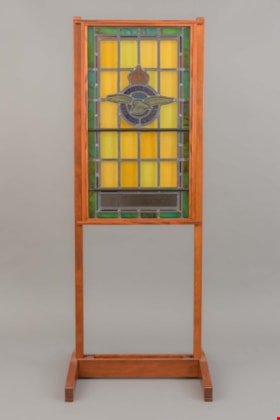
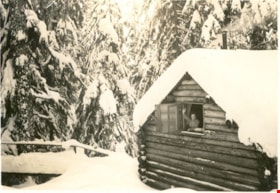
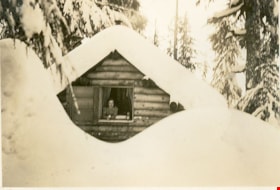

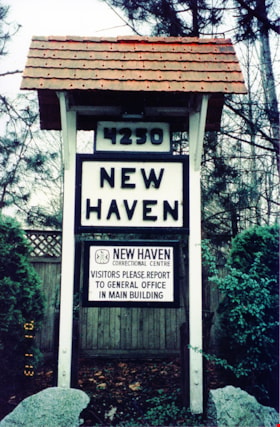
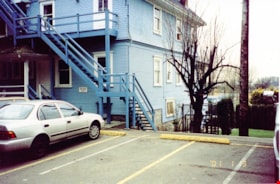
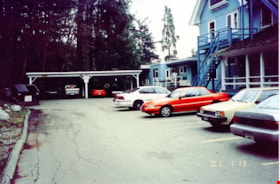
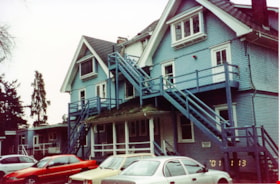
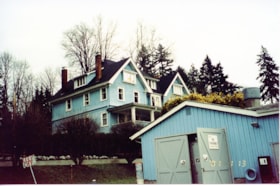
![Old Curly with a logging crew, [between 1912 and 1914] (date of original), copied June 1987 thumbnail](/media/hpo/_Data/_BVM_Images/1985/198900080001.jpg?width=280)
![Old Curly with a logging crew, [between 1912 and 1914] (date of original), copied June 1987 thumbnail](/media/hpo/_Data/_BVM_Images/1985/198900080002.jpg?width=280)
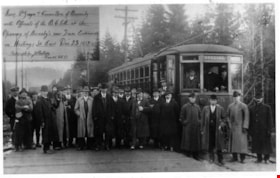
![Parade along Hastings Street, [between 1924 and 1935] thumbnail](/media/hpo/_Data/_BVM_Images/1974/197500330003ax.jpg?width=280)

